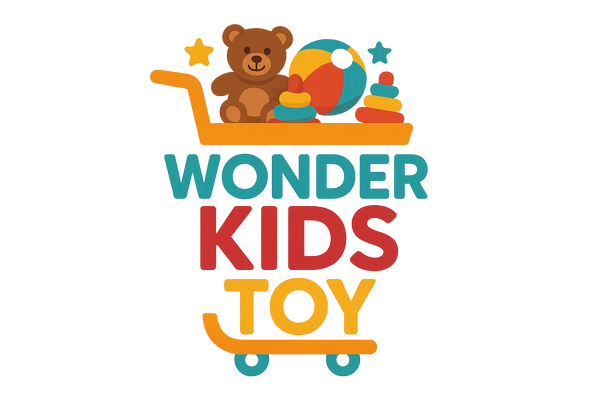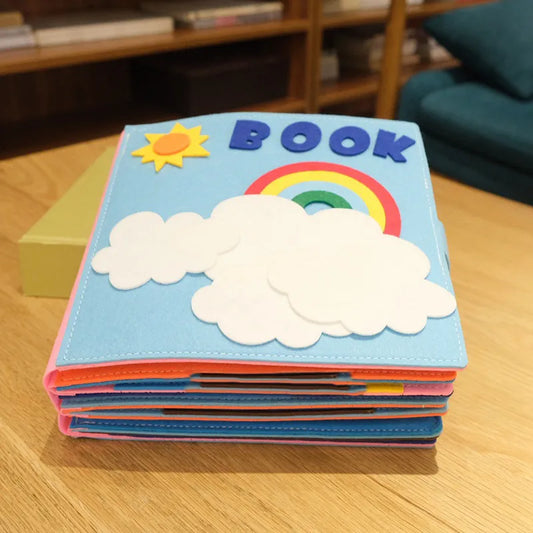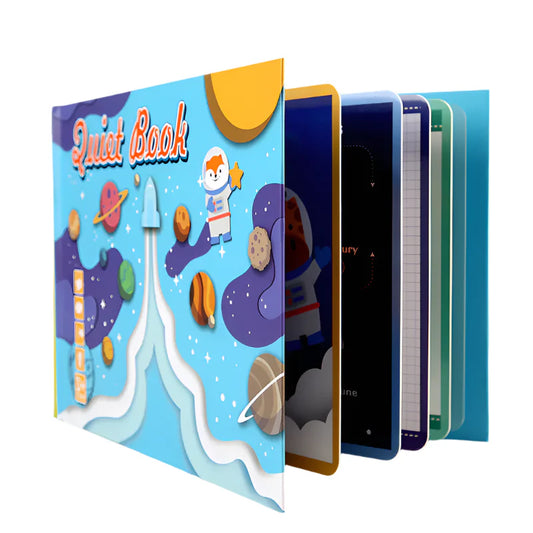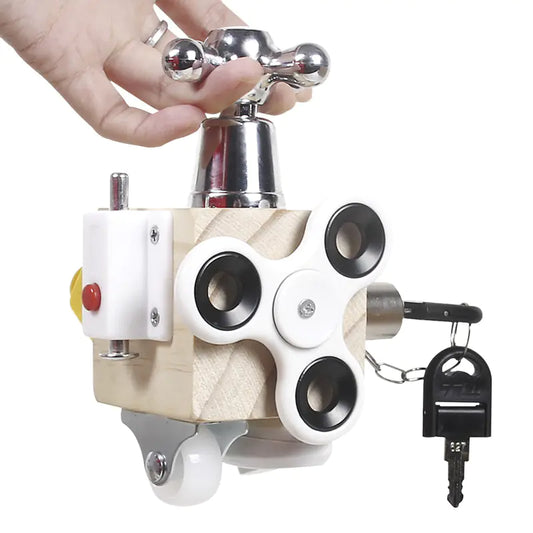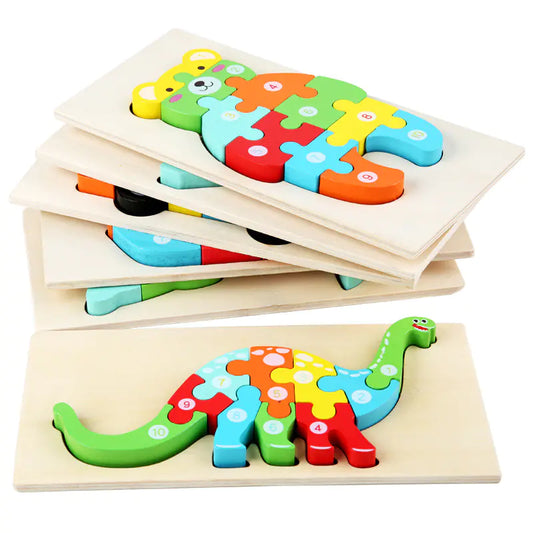Fun, Calming & Educational Play for Every Child
Every child’s learning process is truly unique. Some little ones are wild and bounce into the environment with exuberance, while others are more mild-mannered and pull back first and take their time to ease into things.
As parents and caregivers, we want the same things for our children - happiness, calmness, and the ability to face unknown experiences with confidence. In our fast-paced world, distractions are abundant, and expectations begin almost immediately. For many children, traditional play isn't enough to create, imagine, build, and discover. Sensory learning toys help children - not as idle pastimes, but real platforms for development.
Sensory learning toys are specially designed to stimulate a child's senses - touch, sight, sound, and taste and smell (sometimes). Through colour, sound, movements, textures, and shapes, children learn much more than entertainment. They know how to calm their emotions, sustain their focus, and pay attention to the world around them.
For toddlers, this may take the form of finding joy in stacking textured blocks; for a school-aged child, it may mean finding calm with a fidget spinner during homework time. For families with more routine challenges, involving sensory play often turns into a healthy way to lighten anxiety or manage attention challenges such as ADHD.
What is so powerful about these toys is that they bring together fun with function. Kids don't know they're developing problem-solving skills, developing fine motor skills, or exercising self-regulation — they think they're playing. And as parents, that is the best kind of play – happiness, safety, and full of benefits that last long after play is done!
Give your child the gift of play that inspires growth and calm. Shop Sensory Learning Toys Today!
Why Sensory Learning Toys Truly Matter
The word "play" is not just play! Play is a children's language for learning. It's how they observe and experiment with their world, comprehend their feelings, and develop the abilities and skills they will use in their future. We can take a more integrated approach to playtime by using sensory learning toys, as they can turn routine and everyday experiences into learning opportunities that expose children to life lessons.
These toys also provide a very gentle way to invite children to make meaning out of their environment by focusing on sounds, textures, and movement through sights. A textured ball can spark your child's imagination in many fun directions, and you can even use it to help build hand strength and improve coordination skills.
Stacking cups, wooden Montessori educational toys, and brightly colored puzzles for assembling, all encourage fine motor, gross motor development, and most importantly, FUN! In conclusion, sensory play is more than an activity. Sensory play is a foundation of confidence, creativity, and calmness that can help create a joyful and meaningful childhood experience.
Sensory Toys for Every Age Group
Every milestone feels like a celebration, and sensory play evolves beautifully as your child grows.
Here’s how sensory toys for kids make a difference at each stage:
Sensory Toys for Newborns & Infants.
At the youngest age group, babies learn through seeing and feeling. Soft rattles, high-contrast black and white cards, and crunchy fabric books trigger their sight and sound. The sensory toys for infants encourage new focus, eye tracking, and first motor movements.
Sensory Toys for 6-Month-Old Babies
By the age of 6 months, babies begin to explore everything by touching and chewing. Safe sensory chew toys made of BPA-free silicone provide new relief to teething babies and build tactile awareness. For more auditory emergence, light-up shakers and musical rattles are fun sensory toys for learning.
Sensory Toys for Toddlers (1-3 Years)
Toddlers love to explore textures and movements. Sensory toys for toddlers, like stacking cups, balls that squish, and interactive play mats, develop twirling coordination while remaining engaged. Water tables and sensory bins also create opportunities for engaging in messy play that has real purpose and meaning.
Sensory Toys for 3-Year-Olds & 4 Year Olds kids
In the 3 and 4-year age group, kids begin imaginative play! Textured puzzles, finger paint, and problem-solving toys like simple maze toys promote imagination and logical thinking. For engaging and calming focus, fidget spinners and stretchy bands can provide a calming effect at home or in preschool.
Sensory Toys for 5-Year-Olds
School brings new challenges. Sensory toys for 5-year-olds, such as stress balls, kinetic sand, or weighted lap pads, help children stay calm and focused in classrooms. Building toys for kids also supports teamwork and early STEM skills.
Sensory Toys for 10-Year-Olds & 12 Year Old Boys
Older children still benefit from sensory input — especially those balancing school stress. Sensory toys for 10-year-olds and sensory toys for 12-year-old boys include advanced puzzles, fidget cubes, magnetic building toys, and even art and craft toys. These tools channel energy into focus and creativity while keeping play engaging.
Benefits of Sensory Learning Toys
Parents, teachers, and therapists all agree: sensory play is more than just fun — it’s one of the most effective ways to help children grow. Here’s why sensory learning toys for babies are loved and recommended time and again:
Improved focus and calm
Children naturally have a large amount of energy and can often become overstimulated by the busy classrooms and noise in their homes. Giving sensory toys or an outlet for children to release energy is helpful for them to refocus on tasks, even if it is to squeeze a stress ball or quietly fidget and spin a fidget toy.
Supports speech & communication
Interactive play allows for conversation. Kids can actively co-create and describe textures, name colours, or pretend with materials in a sensory bin, all of which can help them become more confident in their language and social skills.
Increases fine & gross motor skills
Utilizing things like squishy foam or balancing blocks can help keep their small hand muscles strong. Sensory play can be beneficial for enhancing coordination and improving the ability to complete everyday tasks, such as writing or putting on clothes.
Provides hands-on problem-solving & creative exploration
Puzzles, building, sets, art, and sensory play are all opportunities for kids to use critical thinking and creative intelligence. Kids often forget they are learning and instead enjoy playing while interacting with their peers.
Many occupational therapists support sensory tools.
Sensory tools can help children with autism and ADHD by giving them calming input when they need to focus and have self-regulation during their therapy or their day.
They amuse and educate simultaneously.
Kids don't know they are practicing life skills; to them, it is just enjoyable, hands-on play.
Choosing the Right Sensory Toy for Your Child
Every child is unique, which means the right sensory toy for one might not be the best fit for another. The key is to match the toy with your child’s stage of development, sensory preferences, and environment.
Consider the Age. Babies and infants will often require soft chewable textures to soothe their gums and safely explore. Toddlers will typically enjoy building hand-eye coordination with stacking cups, textured balls, or simple puzzles. Older children may enjoy building sets, fidgets, and problem-solving toys that challenge creativity and concentration.
Sensory needs also matter. Some children have a strong need for touch — they love to squish, squeeze, and feel textures. Other children are drawn more to sound or calming visual play, such as liquid timers and glowing lights. Matching the toy to whatever your child is seeking allows for deeper engagement.
The environment also has a role in matching the placement of toys. For example, a quiet fidget toy would work well anywhere (e.g., at school or while travelling), while a larger building kit or sensory bin would work better at home, where there is space.
Lastly, think about your goals for the fostering of play. Do you want them to strengthen their fine motor control? Promote problem-solving? Provide a calming comfort? The right toy can do all of these things while providing enjoyment.
Bring Sensory Play Home Today!
From a newborn’s first rattle to a 12-year-old’s building challenge, sensory toys for kids bring joy and growth at every stage. They calm restless energy, spark curiosity, and build lifelong skills — all through the power of play. Discover our range of sensory learning toys and give your child the gift of calm, creativity, and confidence today. Shop Now & Find Your Child’s Perfect Sensory Toy!


